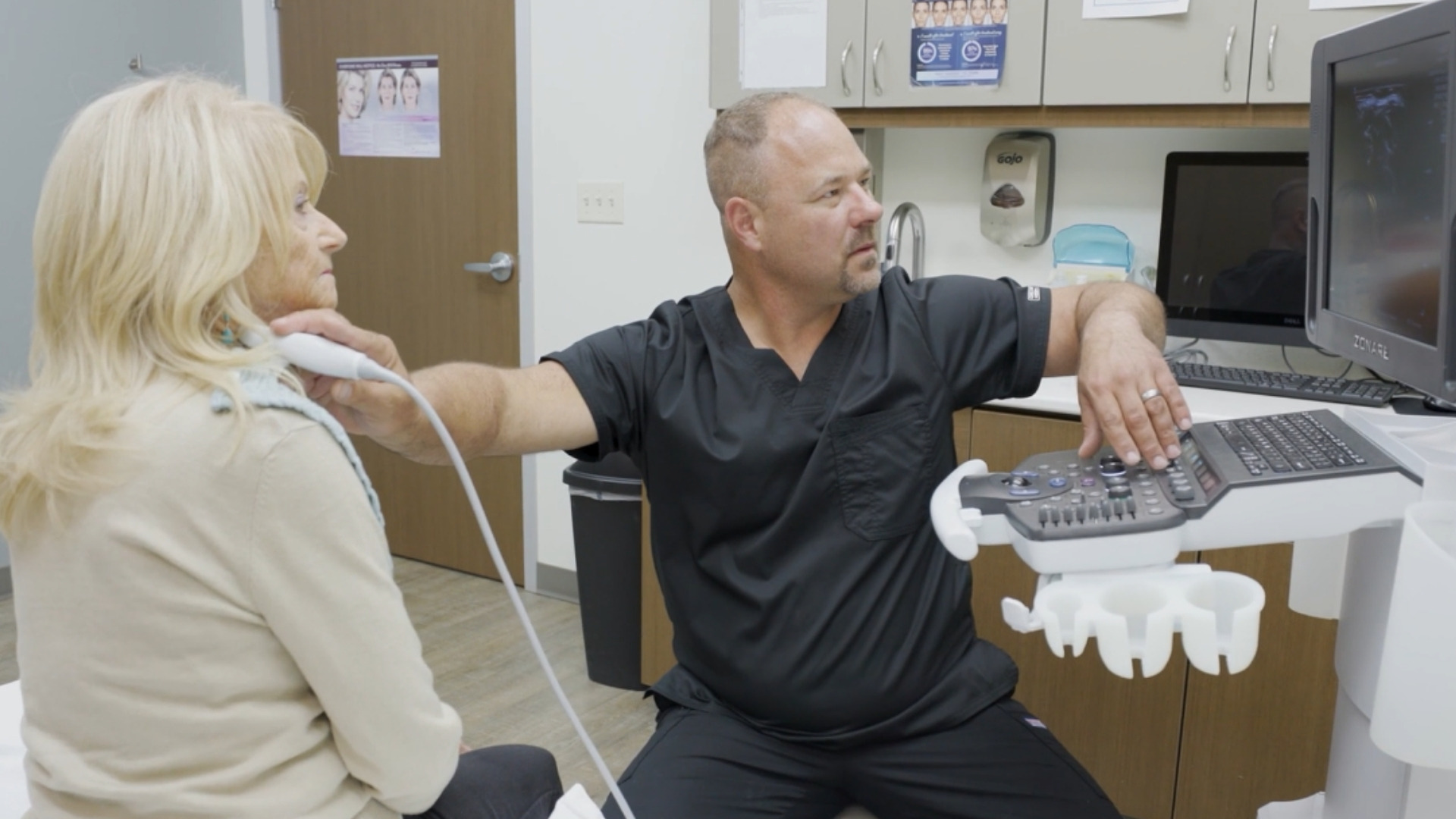Aneurysms are one of the more frightening health concerns that can arise from untreated vein & artery issues, which makes uncertainty about how to treat aneurysms incredibly concerning. Lots of people have lots of questions about how to treat aneurysms, and we understand why.
We know this intro isn’t exactly warm and welcoming, but we think it’s essential to still approach serious health concerns with the intent to educate and inform. That way, you can acquire the information necessary to monitor your health and wellness.
That’s why the Ozark Regional Vein & Artery Center team is interested in deep-diving into the subject of aneurysms. We’ve consulted Dr. Stout, the resident vascular surgeon here at the Ozark Regional Vein & Artery Center. He has decades of experience providing high-quality arterial care to patients across the country. With the help of his expertise, we’re here to educate you on all things vascular health and explain the inner workings of your circulatory system.
So, though it may be a little frightening, we will take this month’s blog to answer frequently asked questions, go over options for how to treat aneurysms, and discuss preventative measures you can take to preserve your vascular health!
Your Trusted Vascular Specialists
You know Dr. Haney and the incredible team at the Ozark Regional Vein & Artery Center for their work as premier vein experts in Rogers. With patients from all across Northwestern Arkansas, from Bentonville down to Fayetteville, they’re trusted across the region to provide concierge-level care and the highest-quality vein treatments available.
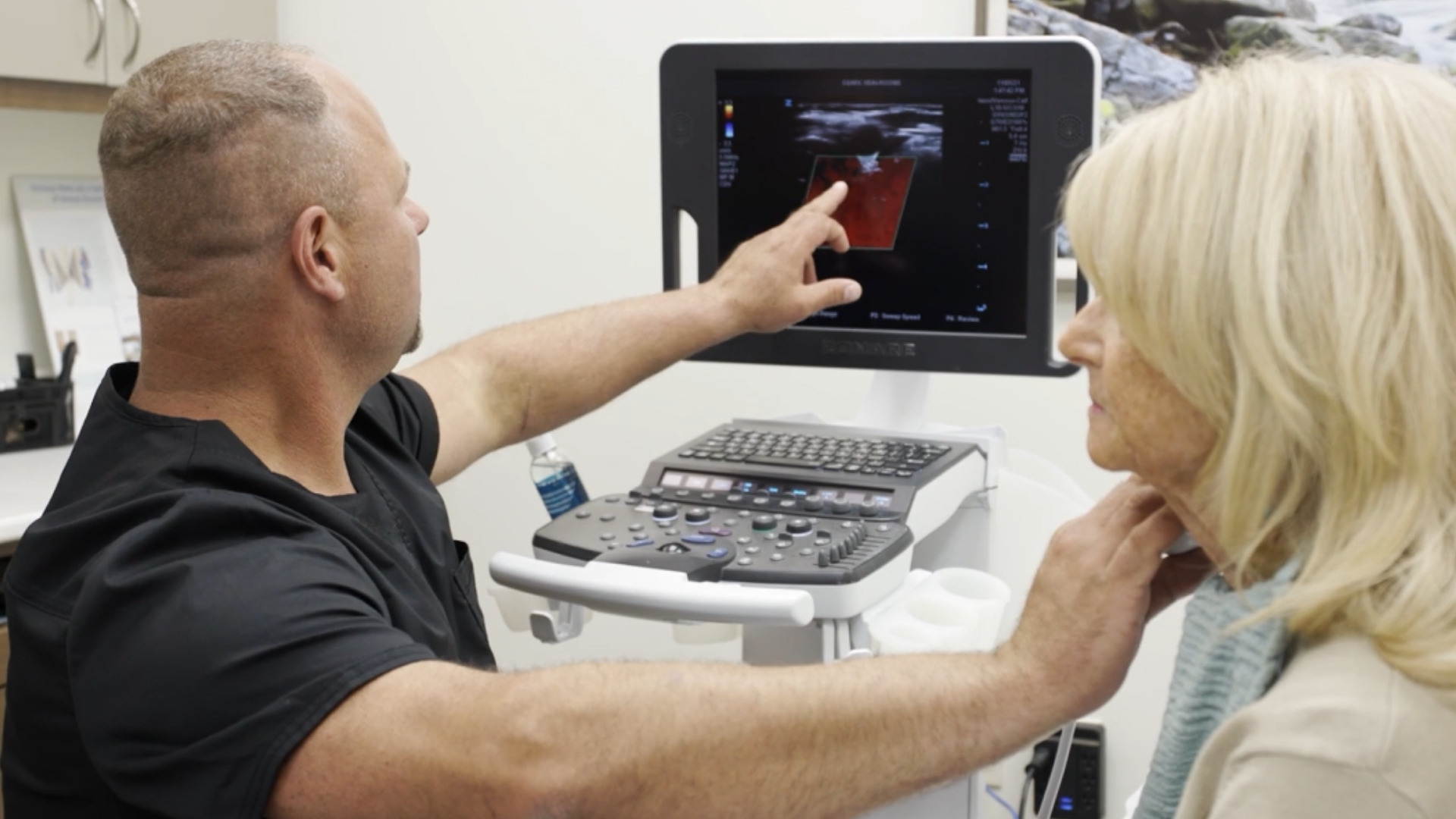
With the expertise provided by Dr. Christopher Stout, the newest addition to the Ozark Regional Vein & Artery Center team, we’re now servicing Northwest Arkansas with world-class arterial care.
As we’ve learned from our years of providing care to our community, many people haven’t had the opportunity to learn about vascular health. This lack of awareness is one of the many reasons we’re committed to providing exceptional patient education to everyone we work with.
How To Treat Aneurysms
If your provider discovers that you have an unruptured aneurysm, they’ll monitor your condition closely. The goal of treatment is to prevent the aneurysm from bursting.
Treatment can include medication or surgery depending on the aneurysm’s type, location, and size.
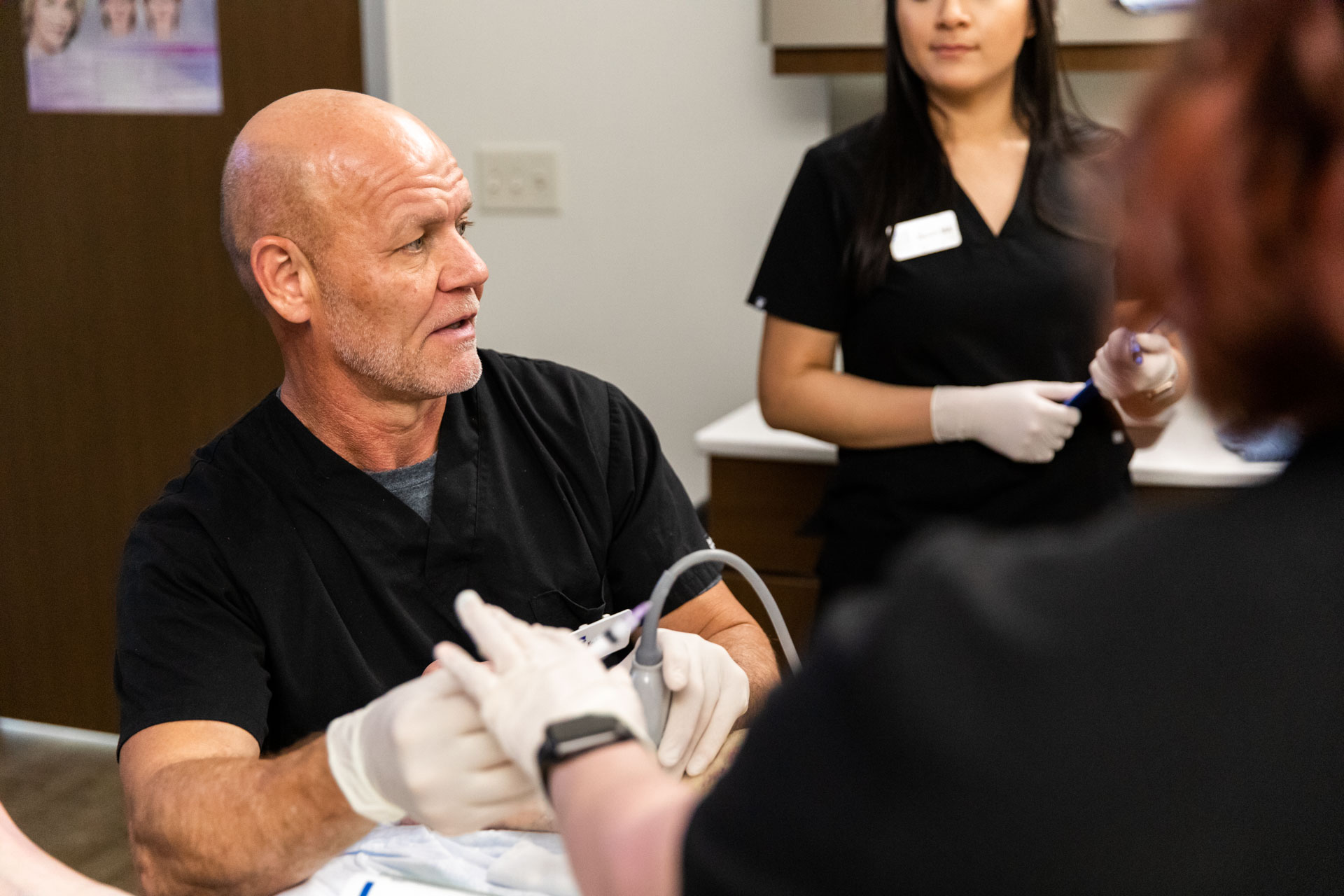
At the Ozark Regional Vein & Artery Center, we can use stenting to supplement less invasive treatments. An arterial stent is a small, metal mesh tube that expands inside an artery. A stent is, when necessary, set during or immediately after angioplasty. We use them to lessen pressure on the aneurysm or bypass the obstruction altogether.
Large aneurysms at risk of bursting may require other surgical alternatives. Types of surgery may include:
- Endovascular aneurysm repair (EVAR): Your provider inserts a catheter (thin tube) into the vessel during endovascular surgery. The surgeon inserts a graft (section of specialized tubing) through the catheter to reinforce or repair the artery.
- Open surgery: In some cases, a surgeon may perform the graft or remove the aneurysm through an incision.
- Endovascular coiling: This procedure treats cerebral aneurysms. The surgeon inserts multiple coils through a catheter to pack the aneurysm. This reduces blood flow to the aneurysm and eliminates the risk of rupture.
- Microvascular clipping: This type of open brain surgery treats cerebral aneurysms. The surgeon places a metal clip at the aneurysm’s base to cut off the blood supply.
- Catheter embolization: This procedure cuts off blood supply to the aneurysm. The surgeon inserts a catheter into the affected artery, using the tube to place medication or embolic agents that prevent bleeding.
Common Questions
Here are some of the most common questions we receive from patients about aneurysms and their impacts on health. If you have any questions you don’t see answered in this blog, please contact us for more information!
Here’s Dr. Stout discussing some of the information we will review in this blog!
What is an aneurysm?
Your arteries are large blood vessels that carry oxygenated blood from your heart to other body parts. If an area in an artery wall weakens, the force of blood pumping through can result in a bulge or aneurysm. That’s what an aneurysm is: a weak or expanded part of an artery, like a bulge in a balloon.
Aneurysms usually aren’t painful. You might not know you have one unless it ruptures or bursts. If it does, it can be very dangerous or even fatal.
What are the different types of aneurysms?
An aneurysm can form in any of the arteries in your body. Aneurysms can occur in your heart, abdomen, brain, or legs. The location determines the type of aneurysm.
Aortic aneurysms are by far the most common. They form in your aorta, your body’s largest artery, which carries blood out of your heart. Aneurysms that develop in arteries other than your aorta are called peripheral aneurysms.
Types of aneurysms include:
- Abdominal aortic aneurysm (AAA): Abdominal aortic aneurysms may form where your aorta carries blood into your abdomen.
- Cerebral aneurysms: Also called brain aneurysms, these aneurysms affect an artery in your brain.
- Thoracic aortic aneurysm (TAA): These aneurysms are less common than AAAs. Thoracic aortic aneurysms form in the upper part of your aorta, in your chest.
- Carotid aneurysm: Carotid artery aneurysms form in your carotid arteries. These blood vessels bring blood to your brain, neck, and face. Carotid aneurysms are rare.
- Popliteal aneurysm: These develop in the artery that runs behind your knees.
- Mesenteric artery aneurysm (MAA): This type of aneurysm forms in the artery that brings blood to your intestine.
- Splenic artery aneurysm (SAA): These aneurysms develop in an artery in your spleen.
How common are aneurysms?
Unruptured brain aneurysms affect 2-5% of healthy people, and about 25% have multiple aneurysms. Most brain aneurysms develop in adulthood—but they can also occur in children—with the average age of detection being around 50. The vast majority of brain aneurysms don’t rupture.
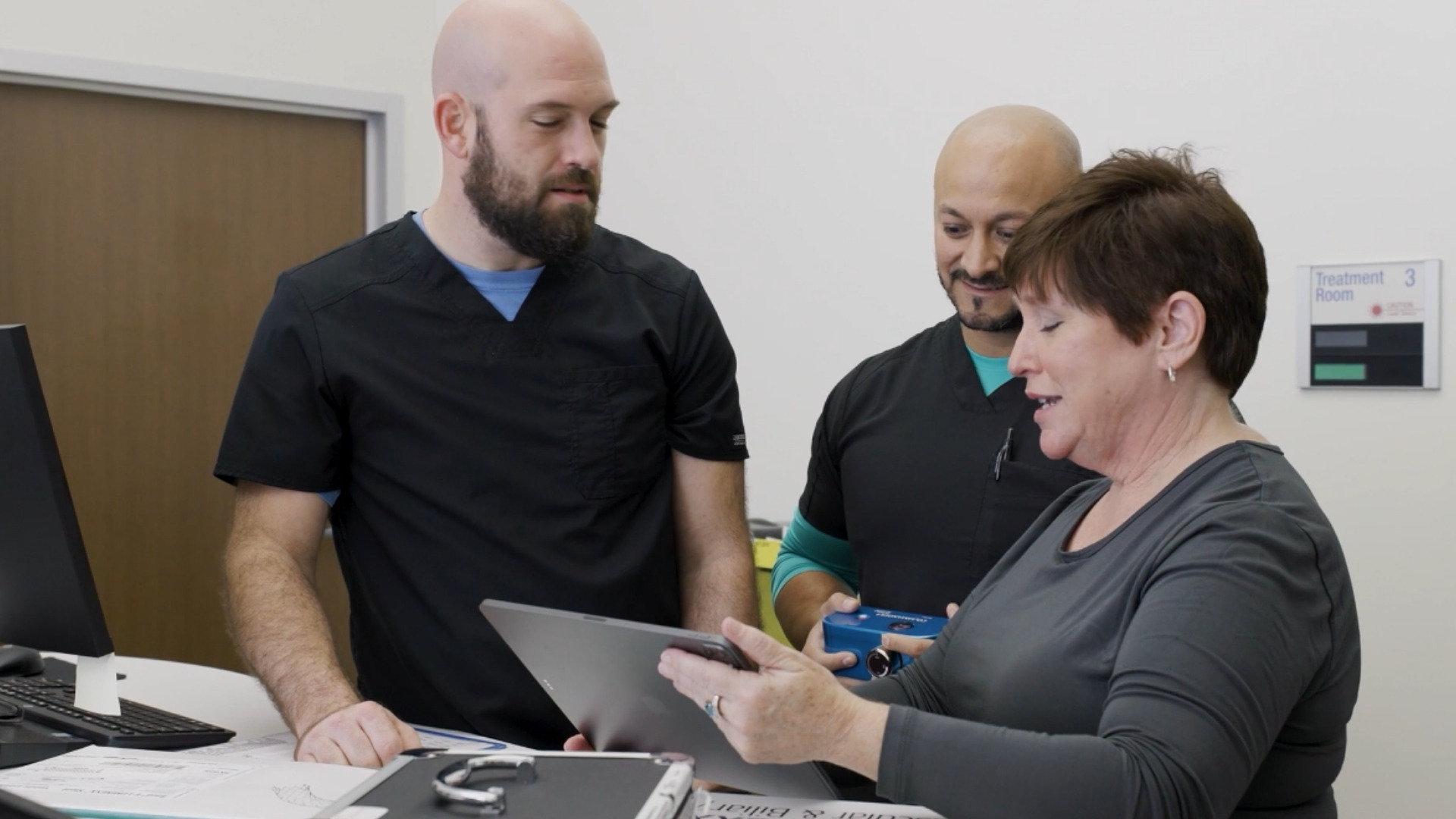
Aortic aneurysms become more prevalent with age. Abdominal aortic aneurysms are four to six times more common in men than women. They affect only about 1% of men aged 55-64. But the incidence increases by 2% to 4% with every decade.
Who is at risk for an aneurysm?
Different types of aneurysms affect different groups. Brain aneurysms affect women more than men. Aortic aneurysms, on the other hand, more often affect men.
Abdominal aortic aneurysms occur most often in people who are:
- Male
- Over the age of 60
- Smokers
- White, although they affect people of any race
What causes an aneurysm?
In some cases, people are born with aneurysms. They can also develop at any point during your life due to arterial disease. Although the cause of an aneurysm is often unknown, some possible causes include:
- Atherosclerosis (congestion/narrowing of the arteries)
- Family history of aneurysms
- High blood pressure
- Injury to your aorta
What are the symptoms of an aneurysm?
In many cases, people don’t know they have an aneurysm. If an aneurysm ruptures, it’s a medical emergency that requires immediate treatment. Call 911 if you or someone you’re with shows signs of a ruptured aneurysm.
Symptoms of a ruptured aneurysm come on suddenly. You may feel:
- Lightheaded
- Rapid heartbeat
- Sudden, severe pain in your head, chest, abdomen, or back
- Sudden loss of consciousness following a severe headache
When an aneurysm causes symptoms, the signs depend on its location in your body. You might notice signs of shock, such as a drop in blood pressure, feeling clammy and “out of it,” and having a pounding heart.
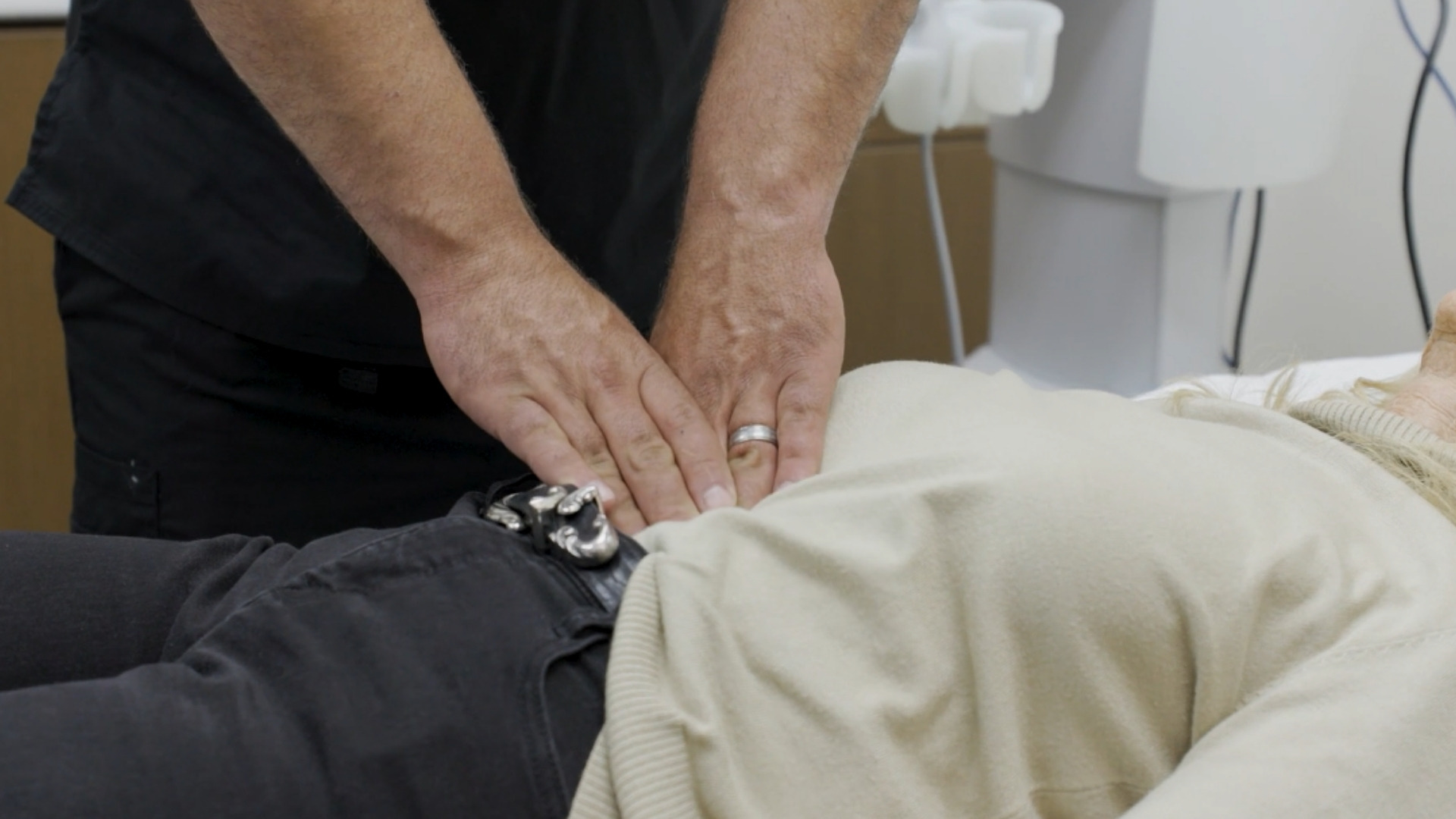
Other symptoms of an aneurysm can include:
- Confusion or dizziness
- Fatigue
- Headache
- Nausea or vomiting
- Pain in your abdomen, chest, or back
- Pulsating abdominal mass or swelling in your neck
- Rapid heart rate
- Vision changes
What are the complications of an aneurysm?
If an aneurysm bursts, it causes internal bleeding. Depending on the location of the aneurysm, a rupture can be very dangerous or life-threatening. An aneurysm in your neck can cause a blood clot that travels to your brain. If the clot cuts off blood flow to your brain, it causes a stroke.
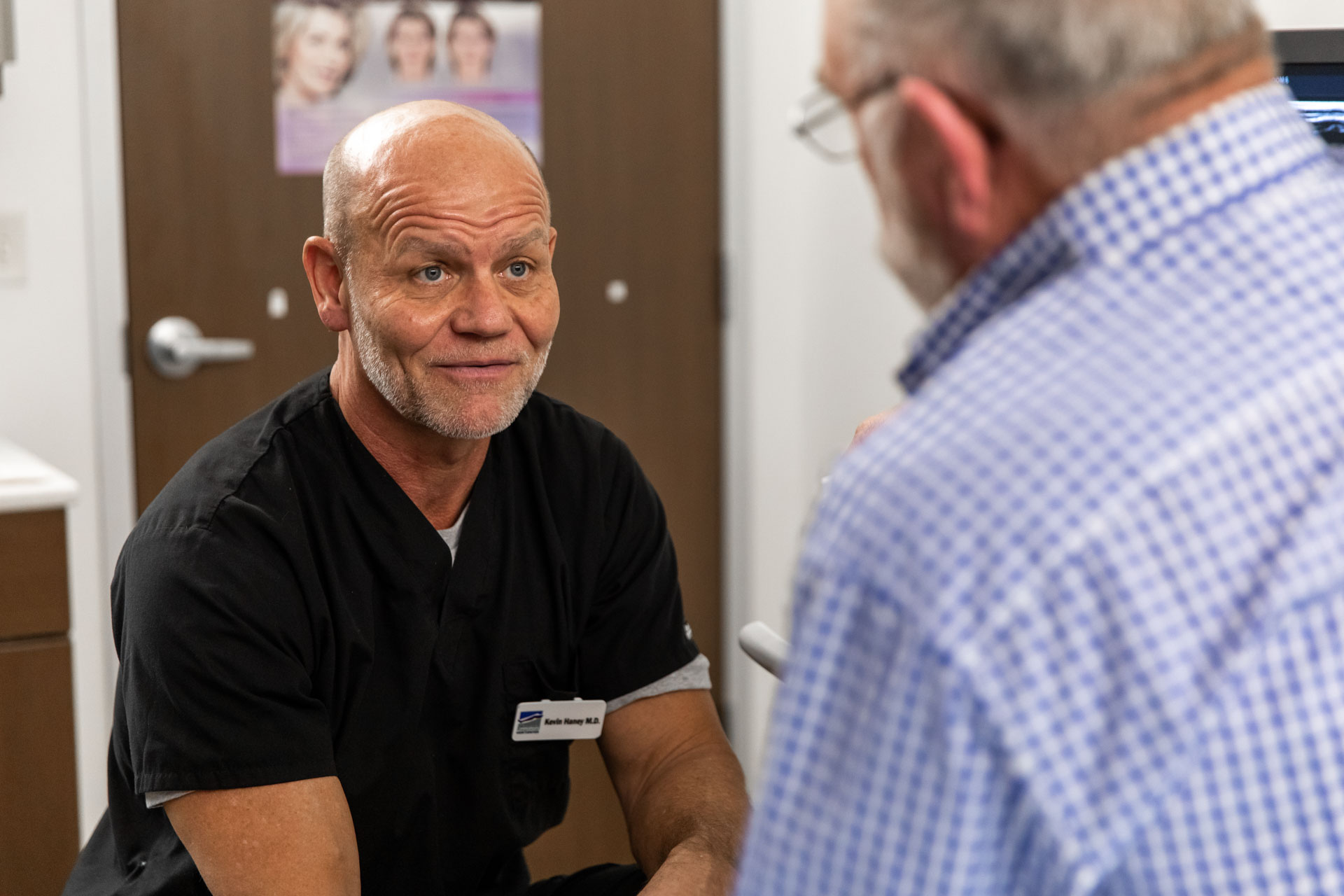
Typically, people have “the worst headache of their life” and then develop other symptoms like limb weakness, headache, and trouble speaking.
How is an aneurysm diagnosed?
Many aneurysms develop without causing symptoms. Your healthcare provider may discover it by accident during a routine checkup or other screening.
If you have symptoms that may indicate an aneurysm, your provider will do imaging tests. Imaging tests that can find and help diagnose an aneurysm include:
How will my healthcare provider classify an aneurysm?
Your provider will classify an aneurysm by its size and how it forms. The different classifications include:
- Fusiform aneurysm: bulges out on all sides of your artery.
- Saccular aneurysm: causes just one side of your artery to bulge.
- Mycotic aneurysm: develops after an infection (typically in your heart valves) has weakened an artery wall.
- Pseudoaneurysm or false aneurysm: occurs when just the outer layer of your artery wall expands.
Preventing Aneurysms
There’s a lot you can do without involving a vascular surgeon to improve your arterial health and prevent the worst of these conditions. After all, conservative treatments and preventative care are hugely important in mitigating circulatory weakness and arterial disease.
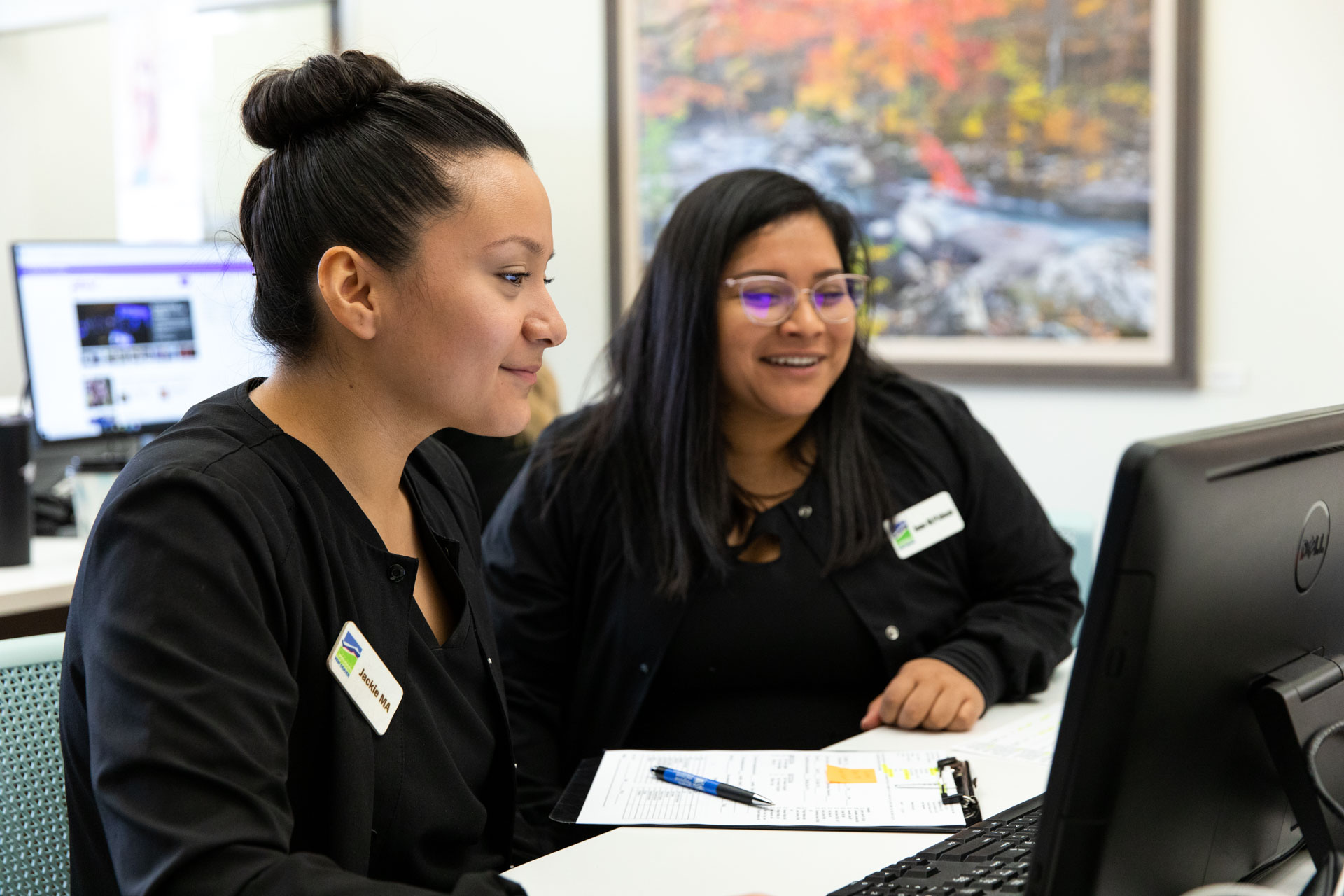
So if you are noticing any of these symptoms, it’s essential to take steps to mitigate future issues. Good behaviors can’t remove plaque already there, but they ensure that the problem doesn’t worsen. With supportive artery care, your vascular health should only improve!
So what is there for you to do?
Our advice isn’t glamorous, but it is simple: take care of your body.
Conservative Care
Make sure not to smoke, consume smaller portions when eating, watch your blood pressure and cholesterol levels, and stay as active as possible. Much of the stress we place upon our circulatory system is, with attention, easily fixed. Though some patients don’t have a say in the matter due to underlying issues, for most people, your artery health is up to you.
Learn how to take care of your arteries at home→
If you’re looking for more specific steps you can take to improve your artery health, here are a few activities you can do:
- Exercise. Exercising is a great way to improve vascular health, as it keeps blood flowing and prevents further plaque buildup. Walking and cardiovascular exercise are beneficial, but anything that elevates your heart rate is good. You should make a point of exercising once a day or as much as is feasible for your lifestyle.
- Eat Healthier. Diet is a major contributing factor to arterial disease. Foods high in cholesterol are a major cause of plaque buildup and increased blood pressure, so eating healthy is important in improving your health: more fruits and vegetables, less red meat, and dairy.
- Lose Weight. This is the most difficult item. Being overweight can strain your circulatory system, which requires more work to move blood around your body. Losing weight is vital to improving circulatory function and vascular health.
Vascular Care
In tandem with conservative care, consulting a vascular specialist is essential to continue arterial health. After all, conservative care can’t erase pre-existing plaque. Rather, it can simply prevent further unhealthy buildup and mitigate the potential worsening of vascular health.
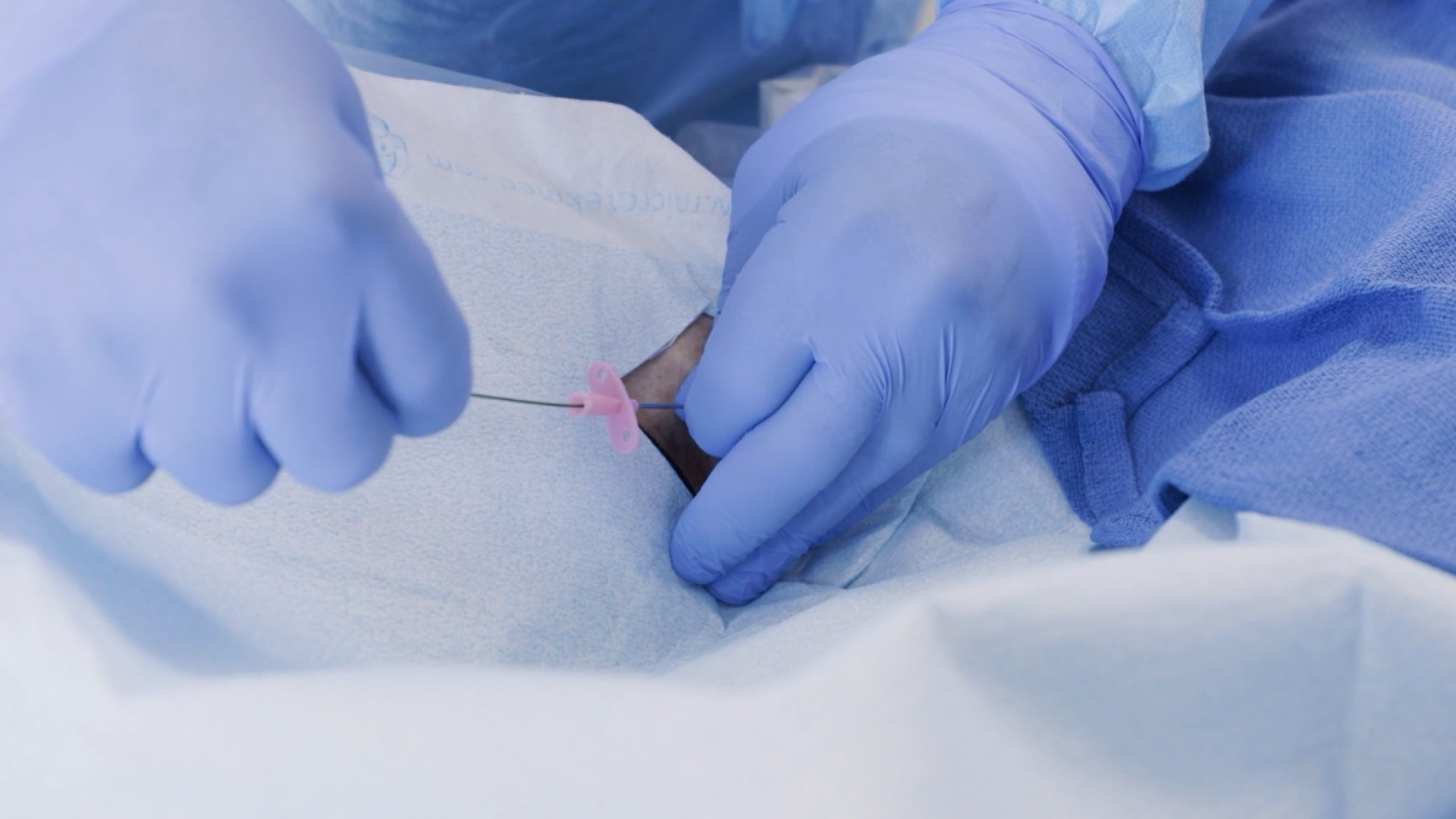
Consulting vascular professionals about how to treat aneurysms is important because they can help set long-term treatment plans and medication regimens to minimize the issue. This style of conservative care isn’t available purely through at-home lifestyle changes or behavioral adjustments. Medications like statins are vital for lowering cholesterol levels, a key factor in arterial disease, and require a prescription from a doctor or vascular surgeon.
These care alternatives are only available when consulting a vascular professional equipped with the resources to provide you with comprehensive care.
Why you should see an Artery Specialist in Rogers→
Learn more about how to treat aneurysms at Ozark Regional Vein & Artery Center
If you require aneurysm care in Rogers or just want to know more about how to treat aneurysms, come to the Ozark Regional Vein & Artery Center. Our experience and growing suite of care options enable us to guide you toward lasting wellness solutions for a happier, healthier life.
We are the premier practice in Northwest Arkansas for all the highest-quality vein treatments available. Patients come to Dr. Haney, Dr. Stout, and the expert staff from all over Northernwestern Arkansas, from Fayetteville to Bentonville, to ensure they receive the best concierge-level care and leg vein procedures available.
After all, helping people is what we do, and it is our mission to provide the people of Northwestern Arkansas and beyond with the absolute best care possible. Our ever-expanding areas of expertise and commitment to patient education help us to achieve meaningful results for our patients each and every time.
Lead the charge on your vascular care with our Virtual Vein Screening Tool or by scheduling a consultation.

